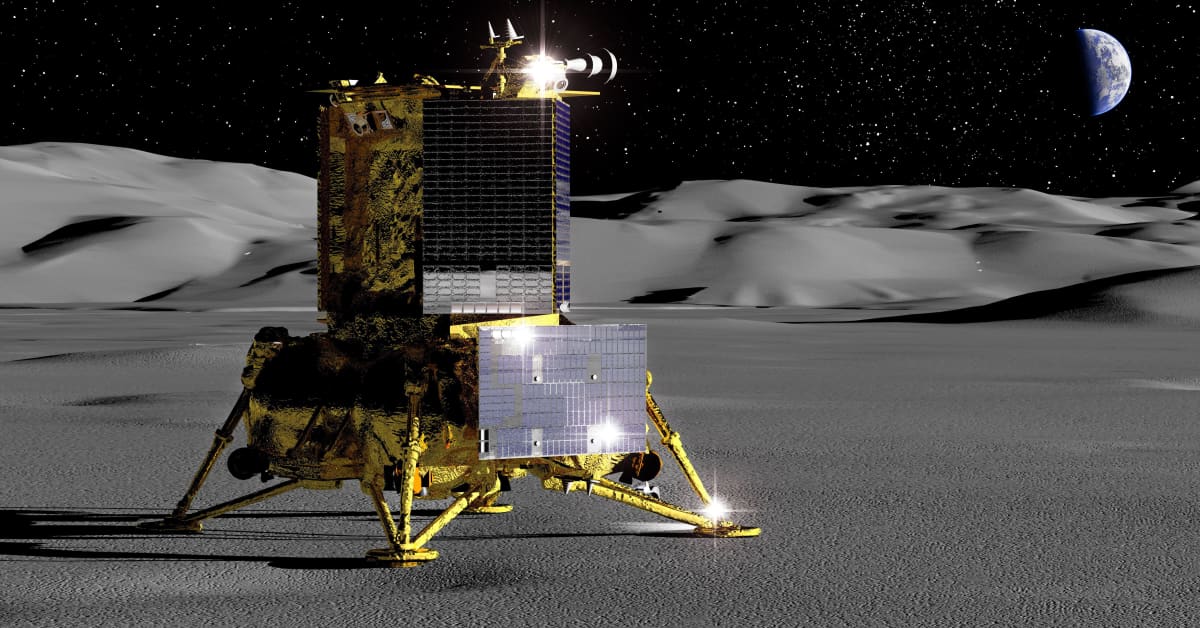Install the app
How to install the app on iOS
Follow along with the video below to see how to install our site as a web app on your home screen.
Note: This feature may not be available in some browsers.
You are using an out of date browser. It may not display this or other websites correctly.
You should upgrade or use an alternative browser.
You should upgrade or use an alternative browser.
Avaruus
- Viestiketjun aloittaja Juke
- Aloitus PVM
tulikomento
Supreme Leader
Miehitetty kuulento kenties myöhästymässä.

 www.hs.fi
www.hs.fi

Avaruus | Nasan miehitetty kuulento saattaa lykkääntyä SpaceX:n ongelmien vuoksi
Nasan edustaja kantaa huolta SpaceX:n kehittämän laskeutumisjärjestelmän valmistumisesta.
Kongo-Müller
Luutnantti
Veikkauksia miten käy ryssän Luna 25 projektin?Jääkö kiertoradalle kuten Fobos-Grunt vai pääseekö edes niin pitkälle?Toivottavasti ei päädy paskomaan edes tuhoutuneena kuun pintaa.
Veikkauksia miten käy ryssän Luna 25 projektin?Jääkö kiertoradalle kuten Fobos-Grunt vai pääseekö edes niin pitkälle?Toivottavasti ei päädy paskomaan edes tuhoutuneena kuun pintaa.
Veikkaus: Jää kiertämään maata, kunnes tipahtaa sädetikkuna savannille.
tulikomento
Supreme Leader
Esko Valtaojan tarinointia katselee ihan mielellään.
Ryssän Luna-25 kuulaskeutuja ei taida päästä perille.
viimeinen mohikaani
Kenraali
Ryzzimiseksihän tuo meni, eivät ainakaan vielä syyttäneet kuunatseja:Ryssän Luna-25 kuulaskeutuja ei taida päästä perille.
Venäjän kuulaskeutuja tuhoutui törmättyään Kuun pinnalle
Kuulento oli Venäjän ensimmäinen sitten vuoden 1976.
Huhta
Greatest Leader
Ryzzimiseksihän tuo meni, eivät ainakaan vielä syyttäneet kuunatseja:

Venäjän kuulaskeutuja tuhoutui törmättyään Kuun pinnalle
Kuulento oli Venäjän ensimmäinen sitten vuoden 1976.yle.fi
Whatabout
-Mars Climate Orbiter
-Mars Polar Lander
-Beagle 2
-Schiaparelli
?

NASA’s failures: Robotic space missions that didn’t go as planned
Not every NASA mission has gone as planned. Yet, almost every scientist will tell you that they learn (almost) as much from their failures as they do from their successes.
/sarkasmi

Huhta
Greatest Leader
"2030", "2036"...
Nyt eletään vuotta 2023. En kiirehtisi juhlimaan 7 ja 13 vuoden kuluttua tulevia asioita. Se on hieman kuin pitäisi railakkaat 18-vuotissyntymäpäivät 11- tai jopa 5-vuotiaalle.
Kaipa ne kokoavat jotain COTS-osista. Eikös suomalaisetkin (ICEYE) ole toteuttaneet omansa samalla kaavalla?
Vientirajoitteet ja pakotteet... 99 prosenttia osista voinee tilailla Ebaystä suurlähetystön osoitteeseen ja loput 1 prosentti hankitaan peiteyritysten kautta. Ei olisi edes niin erikoista. Amerikkalaisethan väitetysti laittoivat Peacekeepereihin osia RadioShackistä, kun tuskastuivat virallisten hankintakanavien byrokratiaan. Samoin Toys R Us on tiettävästi toimittanut komponentteja iippojen Tamireihin.
Kyllä sekin päivä vielä nähdään, kun Sojuzin kyytiin lastataan pesukone. Sanokaa minun sanoneen.
Intia on neljäs maa joka pääsee Kuuhun (sanaleikki tarkoitukseton).

 yle.fi
yle.fi
Intia laskeutui onnistuneesti Kuuhun neljäntenä valtiona ihmiskunnan historiassa
Intia sai revanssin vuoden 2019 epäonnistumisesta, kun Chandrayaan-3-laskeutuja onnistui pehmeässä laskeutumisessa Kuun pinnalle.
Rambo
Majuri
Menihän se. Ryssä lyöty tälläkin osaalueella.Suora lähetys Intian Chandrayaan-3:n laskeutumisesta Kuuhun. Katsotaan meneekö tuolla erittäin kehittyneellä teollisuusmaalla paremmin kuin ryssällä.
tulikomento
Supreme Leader
Scott Manley tarinoi intialaisten kuuluotaimesta.
Tosi kiehtova artikkeli siitä, kuinka Deep Space Networkista eli avaruustiedonsiirtokyvystä on tullut todella paha pullonkaula. Esim. cubesatit viehättää monia tekijöitä, mutta tältä DSN:ltä ne vaativat suurta keskittymistä kun ovat itse niin kehnoja vikasietokyvyiltään. Eli pahimmillaan jotain hyttysenpaskaa tiiraillaan kun sama aika voitaisiin käyttää kymppimiljardin maksaneen James Webbin tietojen siirtoon.

 arstechnica.com
arstechnica.com
Tuosta vaikuttaisi puuttuvan myös helpompia periaatteellisia ratkaisuja. Esim. jos tiedonsiirtopalvelulle lyödään kunnolla hintaa niin silloin cubesatin pyörittäjä ei kykene niin helpolla JWST:n kanssa kisoihin.
What makes CubeSats appealing to NASA and research scientists is what makes them unappealing to the Deep Space Network, Dodd said.
"They're quick, they're not well-tested. They use little antennas," she said. "When they get in trouble, they need a really big antenna to find them... Do you want these CubeSats to take as much time (on the DSN) as James Webb?"
With limited resources and only so many antennas to go around, the Deep Space Network had to turn away from NASA's other science missions to focus on the Orion spacecraft and the CubeSats flying along with it.
“The missions that lost the most include James Webb, your flagship mission, 184 hours they gave up to support Artemis and CubeSats," Dodd said. The DSN also deferred more than 500 hours of planned maintenance time during Artemis I.
That translates to potential lost or delayed scientific results from the $10 billion James Webb Space Telescope. Other missions that gave up more than 100 hours of time on the DSN during Artemis I included the Mars Reconnaissance Orbiter, the Mars Odyssey mission, and Europe's Mars Express.

NASA officials sound alarm over future of the Deep Space Network
“I’m not sure who thought it was a good idea to put up CubeSats with Artemis I.”…
 arstechnica.com
arstechnica.com
Tuosta vaikuttaisi puuttuvan myös helpompia periaatteellisia ratkaisuja. Esim. jos tiedonsiirtopalvelulle lyödään kunnolla hintaa niin silloin cubesatin pyörittäjä ei kykene niin helpolla JWST:n kanssa kisoihin.



